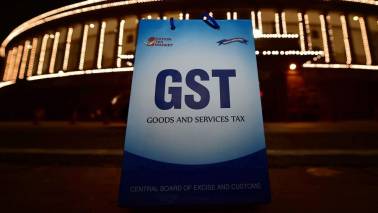Currently, there are 12 banks - 11 in the public sector and one in the private sector – whose capital, asset quality and/or profitability do not meet pre-specified thresholds
Prompt Corrective Action (PCA) imposed on 12 banks has limited their losses and saved taxpayer money, according to the central bank’s Deputy Governor Viral Acharya.
“An important objective of the PCA is to first and foremost limit further losses and prevent erosion of bank capital, creating a platform of stability for the bank, and in turn, setting the stage for structural interventions to be implemented and pushed through,” Acharya said speaking at his undergraduate alma mater Indian Institute of Technology (IIT), Bombay.
According to him, without the PCA imposition, some banks would have incurred even higher losses and required even more of taxpayer money for recapitalisation.
In October 2017, the government announced a recapitalisation package for public sector banks of Rs 2.11 lakh crore, comprising Rs 1.53 lakh crore of government capital infusion and balance to be raised from market funding, by March 2019.
Currently, there are 12 banks - 11 in the public sector and one in the private sector – where capital, asset quality and/or profitability do not meet pre-specified thresholds, imposed with PCA on them between February 2014 and January 2018.
The public sector banks are Bank of India, IDBI Bank, Indian Overseas Bank, Dena Bank, Central Bank of India, Bank of Maharashtra, UCO Bank, Oriental Bank of Commerce, Corporation Bank, Allahabad Bank and United Bank of India. The sole private lender is Kerala-based Dhanlaxmi Bank.
Capital essentially signifies a bank’s financial strength.
PCA: Key to financial stability
In the speech titled, “PCA: An Essential Element of Financial Stability Framework”, Acharya pointed out the share of the 11 public sector PCA banks in advances and deposits as on March 31, 2018, was 18.5 percent and 20.8 percent, respectively.
According to Acharya, there is an assertion being made in some circles that imposition of the PCA has starved the Indian economy of credit.
In May, the government had said it would review on steps taken by these banks to come out of the PCA status.
To which Acharya said, “There is little factual basis for this assertion, either for the overall economy or at sectoral level. While it is true as shown above that PCA banks are experiencing lending contraction on average (in terms of their year on year growth in overall advances), the nominal non-food credit growth of scheduled commercial banks has been close to or above double-digit levels, for past several quarters, and with a robust distribution across the sectors of the real economy.”
This also shows the reduction in lending at PCA banks is because healthier banks are offsetting that credit growth.
“This is indeed what one wants – efficient reallocation of credit for the real economy with a financially stable distribution of risks across bank balance-sheets,” he said adding that the imposition of PCA can thus be seen as first, stabilising the banks at risk, and then, undertaking the deeper bank reforms needed for long-term viability of the business model of these banks.
Adequate bank capital is critical to strengthening bank balance sheets and a key indicator for the bank supervisors to closely monitor. Internationally as well, it is an accepted form of structured early intervention and resolution by bank supervisors and regulators, designed to help banks regain health by preserving capital.
The RBI deputy said banks under the PCA framework are being restored back to health through better capitalisation, preservation of capital, and provisioning for losses.
Therefore, Acharya said it is important that the “PCA framework to deal with financially weak banks is persisted with” and any slackening of the approach in the midst of required course action is an all too familiar and ultimately harmful habit that we must eschew.”
Well begun is only half done, as they say!” he concluded.














